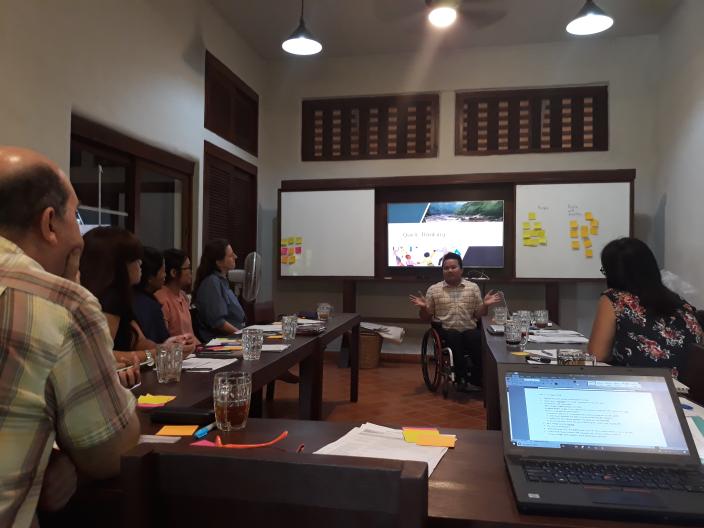
I learned a lot from the process and contents of the Disability Inclusion into Water Governance training organised by Oxfam Mekong Regional Water Governance Program (MRWGP) and EarthRights International (ERI) in Chaing Mai, Thailand last 27th-28th August 2018.
The session, attended by eight participants from four regional partners is a part of the Australia’s Department of Foreign Affairs and Trade (DFAT) compliance requirements for the funded program.
From my perspective, organising the venue for the training session was a good lesson in disability inclusion. The Mithasuu centre of EarthRights International felt like the most peaceful place to stay, designed for People with Disabilities (PWDs), and included wheelchair access and was constructed with environmental protection. The Mithasee center was granted Platinum Leadership in Energy and Environmental Design (LEED)-certified building.
During the two days, trainer Sawang Srisom, who is the Capacity Development Officer, from Nonthaburi Independent Living Centre, played a lead role in facilitating the participants to interact during the session by drawing from his own advocacy including the disability policy work he did with the Thai government and private agencies.
He spoke about his work to include access ramps featured in public institutions as well as installing elevators on the Sky Train stations in Bangkok, a task that took him 10 years to achieve.
Mr Srisom also discussed the discrimination he faced in society when he was pursuing his Masters degree at Chulalongkorn University where he was discriminated by his classmates.
The presentation and experiences shared contributed to a deeper understanding to the challenges faced by PWDs in society and drew participants’ attention to consider including DI within their own organization.
Based on what they learned during the session, participants committed to come up with realistic plan of action to identify the DI’s barriers within their own’s organization and program levels. Furthermore, the checklist was developed to reflect and audit their own contextual organization/program implementation with specific timeframe.
After the training, I had a skype call with several participants, each expressing their gratitude for the chance to learn about disability inclusion.
“It was great to learn from real experience and I realized the importance of self-reviewing policy, for instance, the ramps at my own organisation do not meet the standard presented in the training session, said Chanda Thapa, Deputy Secretary General, Asia Indigenous People’s Pact.
“The training was wonderful. I gained a lot of knowledge,” said Rapeepun Maoyos, from Weaving Bonds Across Borders.
Thanks to the training I learned that thinking and being sensitive about the deeper issues is a crucial way to motivate people to change their perceptions and be more encouraging toward PWDs.
Personally, I gained a huge amount of knowledge from the process and a deeper understanding of the issues PWD face. While at first I was just a facilitator, I started to realise that linking real life examples with the training methodology can be an effective way to change people’s perceptions.
